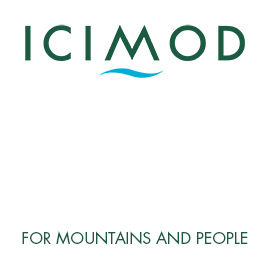Background
In India the Liberalisation of the Indian National Energy Sector in 2003 triggered a rush of hydropower projects in the North east as private power producers were attracted by investment friendly policies at the state level and by large returns from the sale of electricity in the market. The state governments of Sikkim and Arunachal Pradesh signed numerous Memorandum of Understandings with the private companies.
The state of Sikkim is endowed with an entirely mountainous topography and the Teesta river basins with a steep flow gradient which have translated into a capacity of 8000 MW at peak times, which is the second largest in India. Hydropower in Sikkim is a national development priority and is a part of “Hydro Initiative” launched in 2003 by the government of India, to generate 50,000 MW of power. In 2003, when India launched the 50,000 MW initiative, a programme to add 50,000 MW of installed capacity by the end of 12th Five Year Plan, Arunachal Pradesh accounted for more than half of the installed capacity. Out of the 162 sites identified for this mission, 42 are in Arunachal Pradesh. However, none of them had taken off even halfway through the 12th Five Year Plan. The major reason that was given was that the projects have been slowed down due to the contestation by local communities.
In the light of such contestations it is a matter of concern that in India, the concept of Benefit Sharing in hydropower projects is still evolving. The Electricity Act of 2003, directed the project developers to be consistency with another requirement of water for drinking, irrigation, navigation, flood-control and another public purpose along with the ultimate goal of power generation. National Electricity Policy, 2005 besides emphasising on the full development of the feasible hydro potential in the country facilitating economic development included comprehensive Environmental Impact assessment along with the implementation of Environmental Action plan and the Rehabilitation & Resettlement scheme. In 2008, a major initiative was made by formulating the Hydropower policy which recognised Rehabilitation and Resettlement to go beyond mere compensation for lost assets & livelihood for providing a better living condition to the project affected thus making them the long term beneficiary stakeholders.
In light of the contestations around hydelpower projects, the rationale of this study emanates from a felt need to understand benefit-sharing schemes in India. The primary objective of the study is to understand the processes, mechanisms, relevance, and utility of benefit-sharing schemes in hydropower projects, their implementation on the ground, and their sustainability in the long run. The strength of the study emanates from the fact that it will incorporate responses from multiple stakeholders – affected population, benefitted population, hydelpower producer, district and state government officials.
STUDY SITE:
The study has identified 13 projects and 20 affected villages across Sikkim and Arunachal Pradesh for analysis. The selection of cases covers varied projects based on a project capacity, status of progress/commissioning, and ownership type of hydelpower producer agency.
Name of Project |
Location |
Company |
Capacity (MW) |
Ownership |
Date of MoU |
Latest status |
Remarks |
SIKKIM |
|||||||
Rangit III |
South |
NHPC |
60 |
Public |
- |
Commissioned |
Commissioned (2000) |
Rangit II |
West |
Sikkim Hydro Venture |
66 |
Private |
2005 |
Work on hold |
Project works suspended due to funding issues. Cumulative progress of the project 12%. |
Jorthang Loop |
South |
Dans Pvt ltd |
96 |
Private |
2005 |
Commissioned |
Commissioned (2015) |
Rongnichu |
East |
Madhya Bharat |
96 |
Private |
2006 |
Under-construction |
Project under construction and cumulative progress 64%. |
Dikchu |
North/East |
Sneha Kinetic |
96 |
Private |
2006 |
Commissioned |
Commissioned (2017) |
Tashiding |
West |
Shiga |
97 |
Private |
2008 |
Commissioned |
Commissioned (2017) |
Chujachen |
East |
GATI |
110 |
Private |
2003 |
Commissioned |
Commissioned (2013) |
Rangit IV |
West |
Jal Power |
120 |
Private |
2005 |
Work on hold |
Project works suspended due to funding issues. Cumulative progress around 49%. |
Panan |
North |
Himagiri |
300 |
Private |
2005 |
Work on hold |
Project works suspended due to funding issues. |
Teesta V |
East |
NHPC |
510 |
Public |
2000 |
Completed |
Project commissioned on April 2008 |
ARUNACHAL PRADESH |
|||||||
Ranganadi |
Lower Subansiri |
NEEPCO |
405 |
Public |
No MoU |
Commissioned |
Commissioned (2002) |
Pare |
Papum Pare |
NEEPCO |
110 |
Public |
2006 |
Commissioned |
Commissioned (2018) |
Kameng |
West Kameng |
NEEPCO |
600 |
Public |
1999 |
Under-construction |
Test running |

Figure 1 HEP map of Sikkim

Figure 2 HEP map of Arunachal Pradesh

